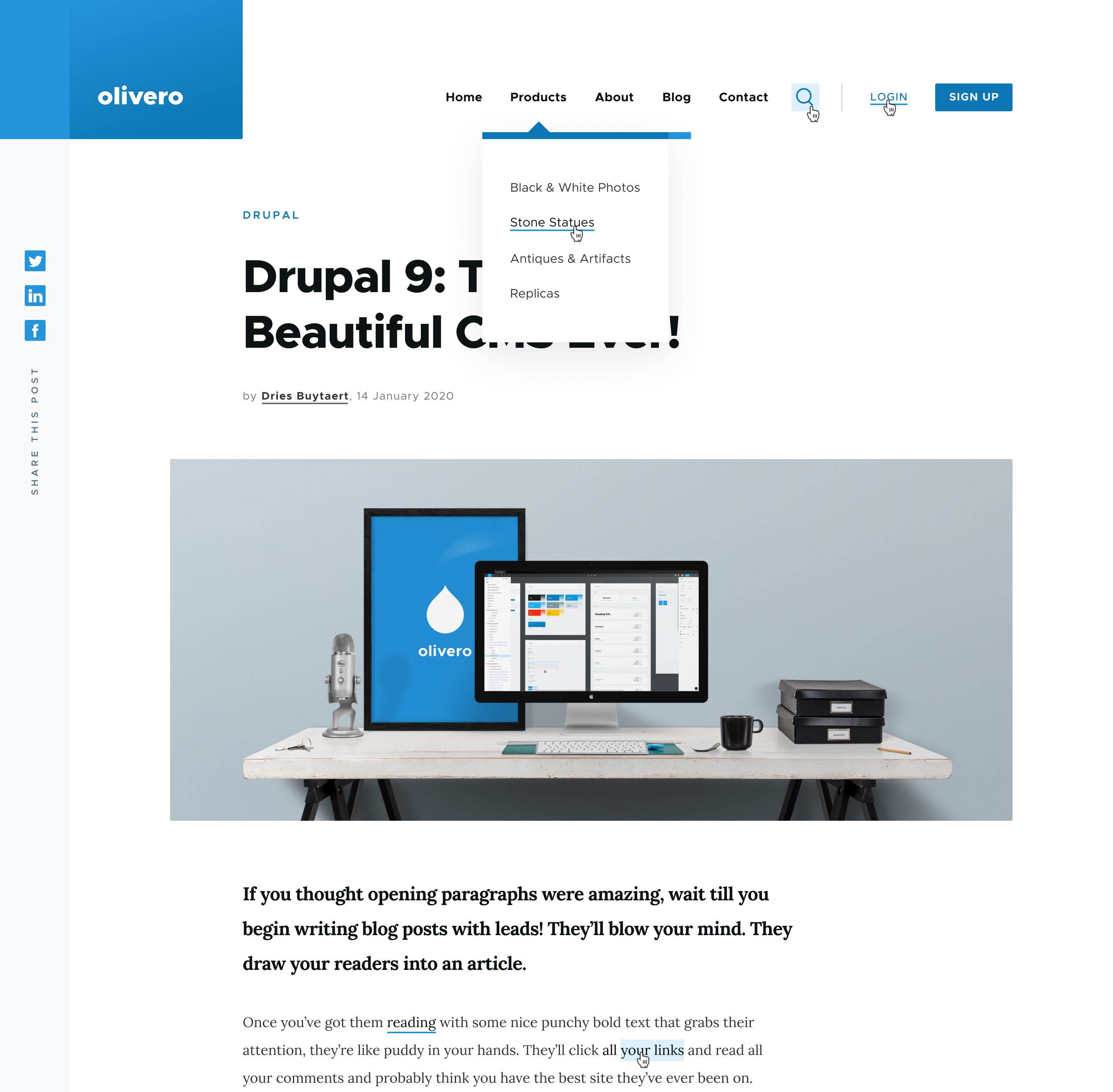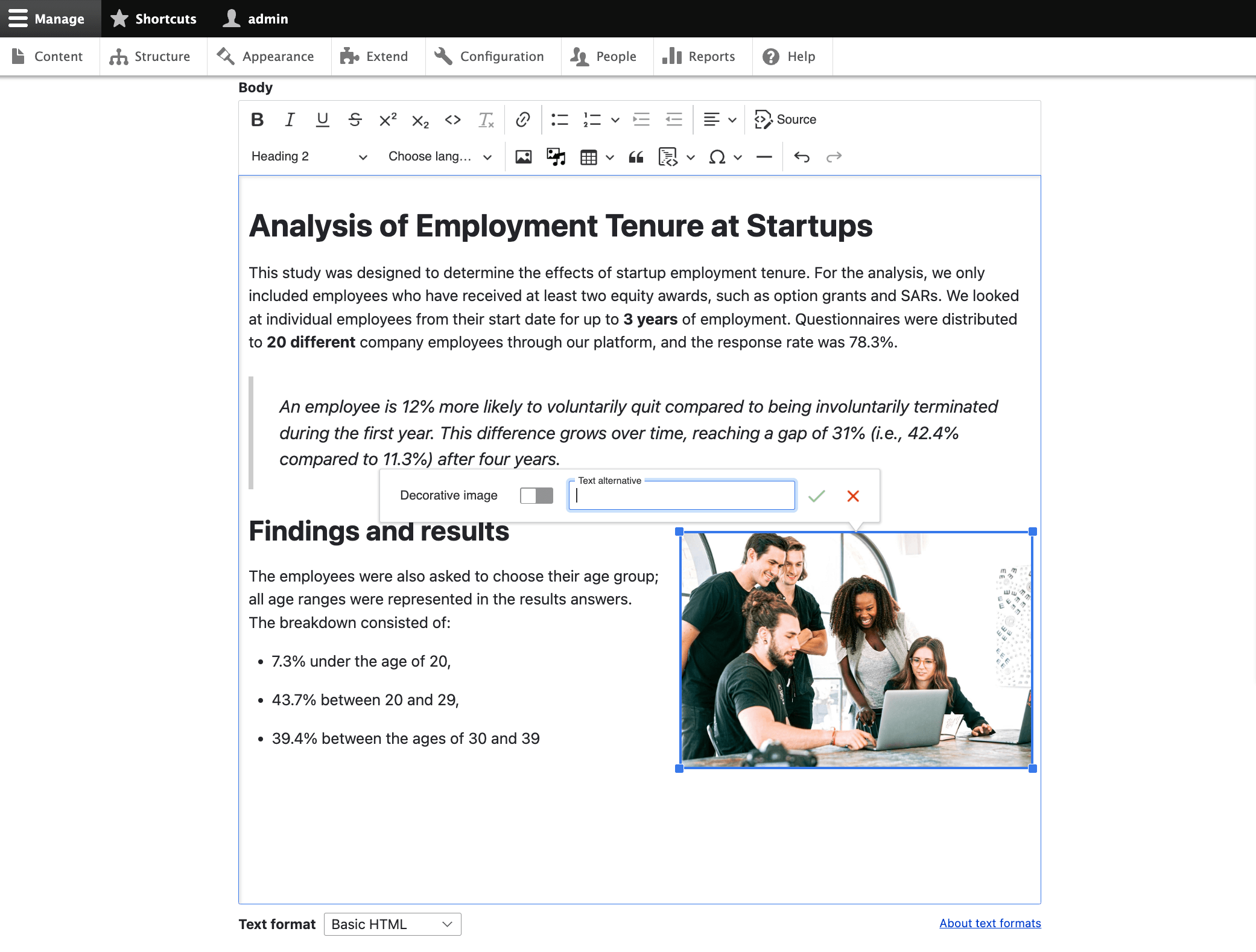Drupal 10 is here!
After the slow pace of previous upgrades, it may take you by surprise that Drupal 10 is already here.
Do you need to upgrade? How easy or hard is it? What's new? In this article, let's break down the how and why of Drupal 10, and what you need to know.
Drupal 7 was released way back in 2011 and still has official support for another year. Drupal 8 came out in 2015 and is already "dead" (no longer supported). Drupal 9 came out in 2020, and has already been replaced by Drupal 10. How is this happening?
The short answer is that it's all by design. Drupal was completely rearchitected in Drupal 8, with two main points relevant to the upgrade timeline.
One, Drupal was designed to be easier to upgrade. Unlike the move from Drupal 7 to 8, site owners no longer need to completely rebuild their sites to install a version upgrade. All newer versions of Drupal are designed to be backwards-compatible with previous versions. When Drupal 9 came out, we were able to upgrade client sites from Drupal 8 with minimal effort, and the same is now true for Drupal 10.
Two, Drupal 8 was rebuilt upon the Symfony framework, an existing code base that allowed Drupal to build new features upon and around (rather than maintaining a unique, built-from-scratch framework). Because of this new dependency, Drupal needs to be updated when Symfony updates. As Symfony updated to version 6, it made sense to release a new version of Drupal to support it.
While Drupal 9 had a relatively short lifespan, it is expected that Drupal 10 (and Symfony 6) will last for the next 3+ years.
For most people, the move to Drupal 10 will feel mostly the same. It's a no-drama upgrade with little fuss, but worth it nonetheless. Why?
For starters, sites need to stay current to continue receiving software updates, security patches and support. Like any software, Drupal needs to be upgraded to stay viable.
But there are a few noteworthy new additions with Drupal 10, as well as some future additions you'll want to have access to.
New Themes

Drupal 10 comes with two new default themes - one for the back-end and one for the front-end.
Claro replaces Seven as the new admin theme. This is on the backend, where editors do their work. Claro is a clean, modern and more user-friendly theme that makes content creation easier and more elegant. On the front-end, Olivero replaces Bartik as the default theme, with many of the same advantages as Claro– a cleaner, more elegant, more modern interface and design.
While our clients all work from custom themes on the front-end, the advantages (and first-impressions) to new users of Drupal is invaluable. On the back-end, we have been working with Claro for the past few years, prior to its new place as the code admin theme, and are excited to bring a better editorial experience to the site for content editors.
Updated WYSIWYG
Drupal 8 came out with CKEditor as its core text editor included. This WYSIWYG tool made it easier for editors to enter content and do basic formatting such as HTML headers, lists, links, embedded media and more.

With Drupal 10, CKEditor itself gets a upgrade, from version 4 to 5. While the core tool may seem mostly the same, version 5 is a complete rewrite and has a series of improvements for users.
The user interface has been modernized, and improved tools are included for managing media, links and tables within the editor. New "premium" features will be available for purchase as well, such as real-time collaboration, revision history and newer export tools.
New Features
Some of the new feature are available now, while others are coming soon. Either way, these are exciting developments for the Drupal community.
The Automatic Updates initiative is bringing a non-technical means towards keeping Drupal and your modules up-to-date, all managed within your browser. The Project Browser will allow users to browse and install available modules from within their Drupal installation (in the browser). These two initiatives are part of Drupal's overall push to make the software easier to manage and use for everyone.
How does this news affect you? It depends on where you are today.
If you're still running a Drupal 7 website, it's time to plan a major upgrade. It's time intensive and potentially costly, but hopefully you've gotten many years out of your site to make it worth the investment. While Drupal 7 has continued to receive extensions to its life (currently Nov 2023), there's little advantage to continue on such an old version. You have a year left to plan and rebuild your site, which is plenty of time to get it done.
If you're on Drupal 8, your version of Drupal is already unsupported. That's the bad news. The good news is that the upgrade path isn't so hard, from 8 to 9 to 10. Most of the work involves verifying and updating modules as needed, as well as any custom features or custom modules in use (to stay compliant).
If you're already a support client, we will have already reached to you about a schedule for the latest upgrades. If you're new to EC, please contact us for help with your Drupal site!




Join the Discussion +